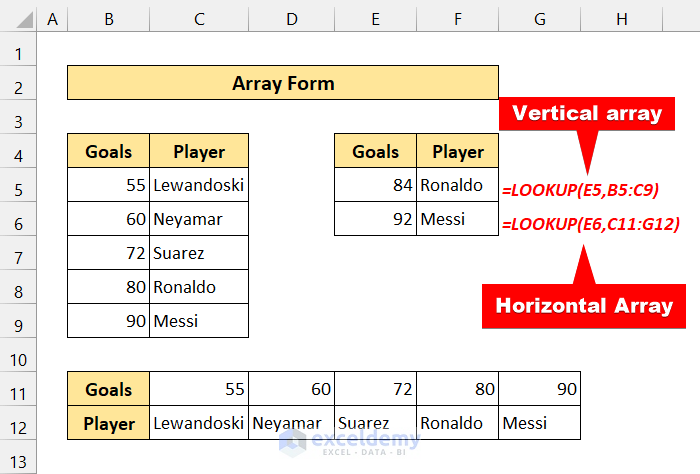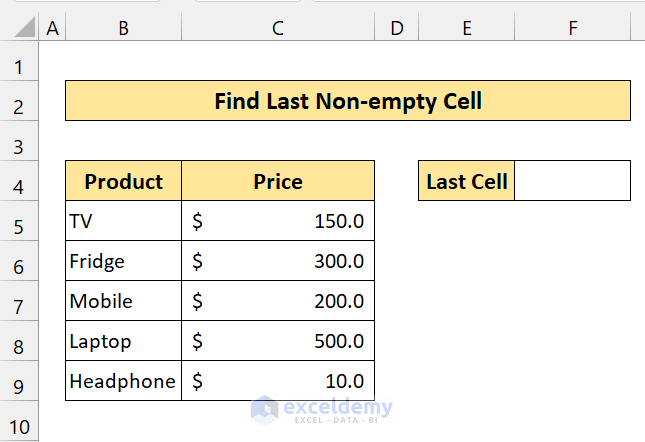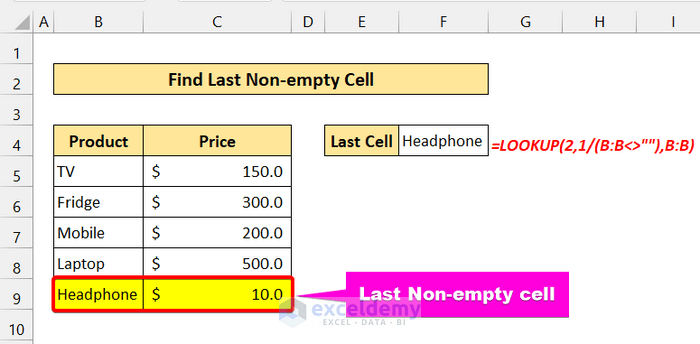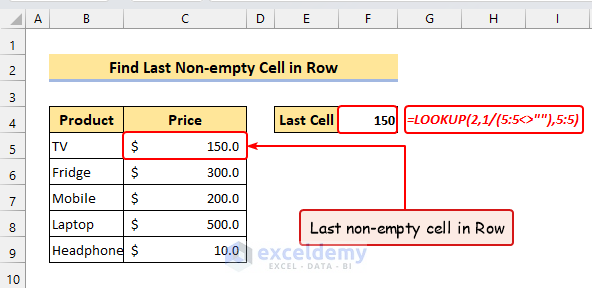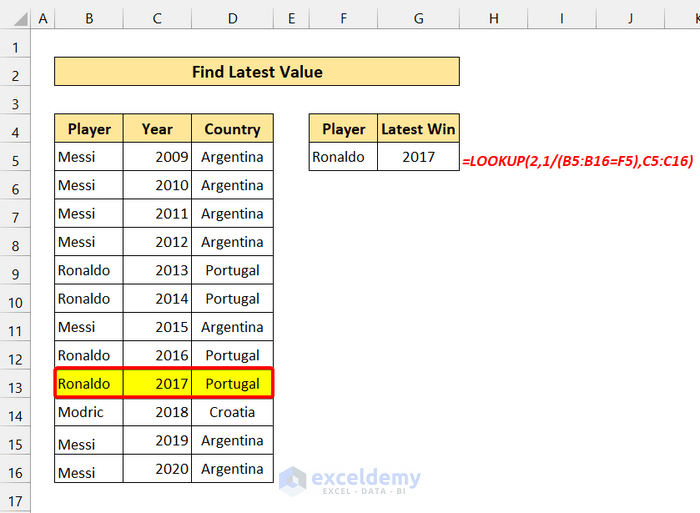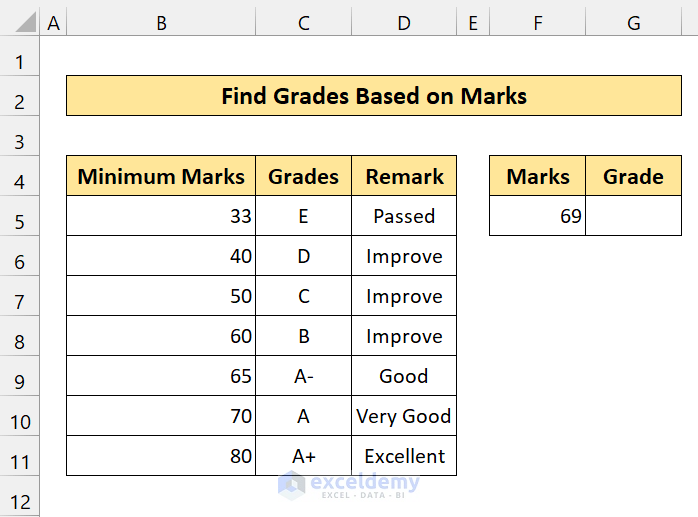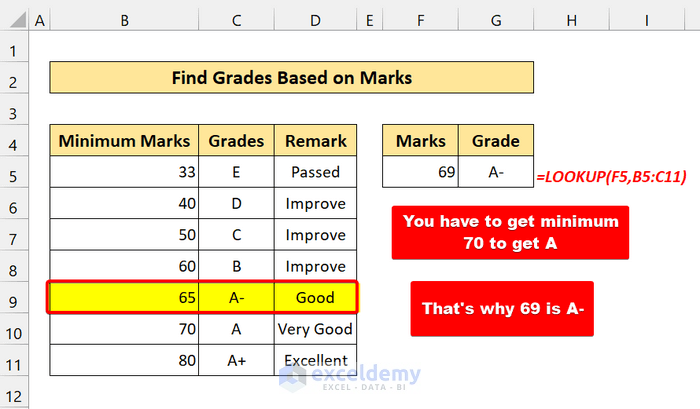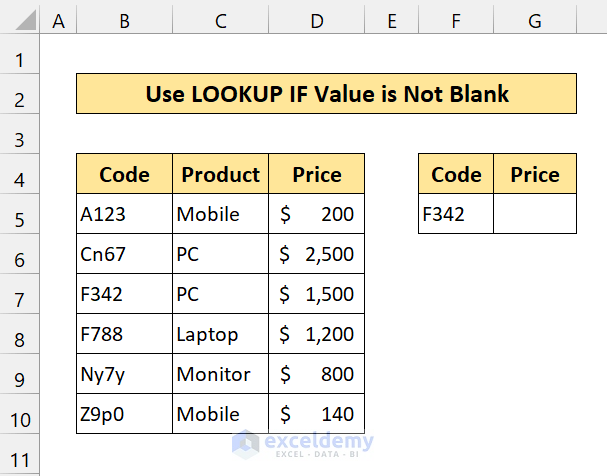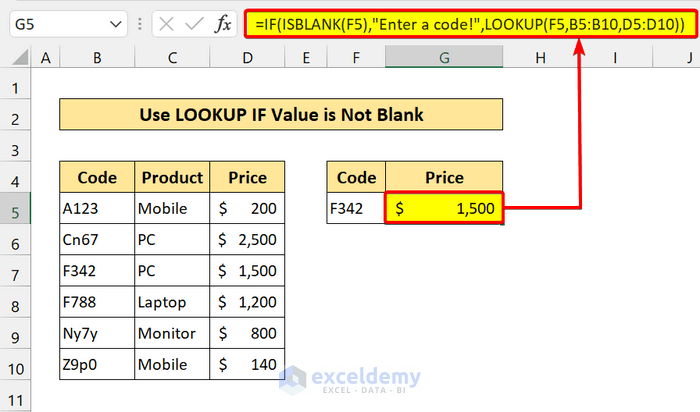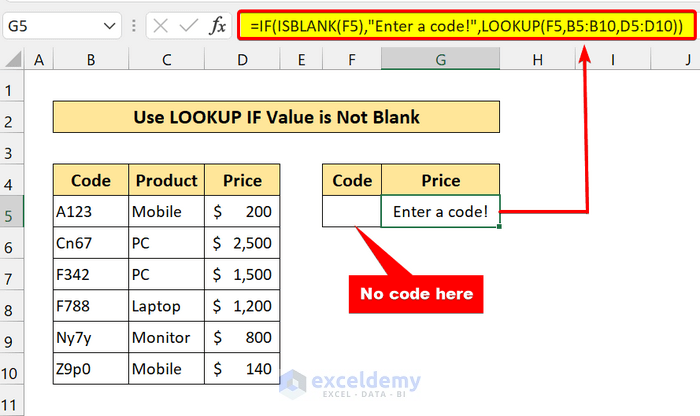In this article, we will learn about the LOOKUP function in Excel. We will explore different examples of the LOOKUP function in different scenarios, with proper illustrations. Here, you will also find some articles using this function for different types of lookups and different use cases. Additionally, we have added some articles that describe other advanced Excel lookup functions.
There are a lot of functions in Excel that you can use to look for a value from a dataset. The LOOKUP function is one of them. The LOOKUP function is categorized under Excel Lookup and Reference functions. If your problem is to find data from a range, this method will work with ease.
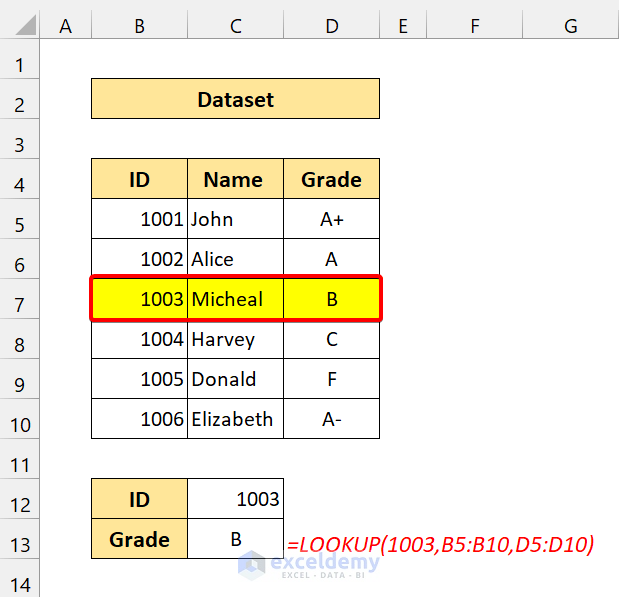
The above screenshot is an overview of the article, which represents a simplified application of the LOOKUP function in Excel. You’ll learn more about the dataset as well as the methods and functions under different criteria in the following sections of this article.
Introduction to the LOOKUP Function
⏺ Function Objective
The LOOKUP function looks up a value in the one-row or one-column range.
⏺ Available in
Excel for Office 365, Excel 2019, Excel 2016, Excel 2013, Excel 2011 for Mac, Excel 2010, Excel 2007, Excel 2003, Excel XP, Excel 2000.
⏺ Syntax
The LOOKUP function is available in 2 formats. The Vector form and the Array form.
Syntax in Vector Form:
⏺ Arguments Explanations (Vector Form)
| Argument | Required/Optional | Explanations |
|---|---|---|
| lookup_value | Required | A value that LOOKUP explores in the first vector. Lookup_value can be a number, text, a logical value, or a name or reference that refers to a value. |
| lookup_vector | Required | A range that includes only one row or one column. The values in lookup_vector can be text, numbers, or logical values. |
| [result_vector] | Optional | A range that incorporates only one row or column. The result_vector statement must be the same size as lookup_vector. It has to be the exact size. |
Important Note to Remember: The values in lookup_vector must be put in ascending order: …, -2, -1, 0, 1, 2, …, A-Z, FALSE, TRUE; otherwise, LOOKUP might not return the accurate value. Uppercase and lowercase text are identical.
[/wpsm_box]
Syntax in Array Form:
⏺ Arguments Explanations (Array Form)
| Argument | Required/Optional | Explanations |
|---|---|---|
| lookup_value | Required | A value that LOOKUP explores in the first vector. Lookup_value can be a number, text, a logical value, or a name or reference that refers to a value. |
| array | Required | A range of cells that contains text, numbers, or logical values that you want to compare with lookup_value. |
⏺ Return Parameter (Vector and Array Forms)
In both formats, the LOOKUP function returns the output for the look-up value.
How to Use LOOKUP Function in Excel: 2 Easy Ways
Now, there are two forms of the LOOKUP function. One is the Vector form and the other one is the Array form. We will discuss them in this section with simple examples. And we will tell you which one to choose. So, stay tuned.
1. Vector Form of LOOKUP Function in Excel
The vector form of the LOOKUP function will explore one row or one column of data for a particular value, and then fetch the data from the exact position in another row or column.

You can see this from this example. Our lookup value was 1003. The LOOKUP function first searched for this value. Then, it returns the corresponding result from the same row.
Read More: How to Use LOOKUP Function Among Multiple Sheets in Excel
2. Array Form of LOOKUP Function in Excel
The array format of LOOKUP peeks in the first row or column of an array for the particular value and returns a value from the same place in the last row or column of the array. We must use this form of LOOKUP when the values that we want to match are in the first row or column of the array.
When we use the array form of the LOOKUP function, the LOOKUP function acts based on the array dimensions. Your array looks taller which means it has more rows than columns. The LOOKUP will behave like the VLOOKUP function in that case.
If your array is wider, it will work like the HLOOKUP function. Wider means it has more columns than rows.
Take a look at this simple example.
Formula for Vertical Array:
=LOOKUP(E5,B5:C9)
The formula for Horizontal Array:
=LOOKUP(E6,C11:G12)
Here, we have the same dataset. We placed the array differently. The first one is the vertical format and the second one is the horizontal format.
How to Use LOOKUP Function in Excel: 5 Suitable Examples
In the following sections, we will provide you with five examples. I hope it will clear your idea about the LOOKUP function in Excel. If you have already read previous sections, these examples will be easier to understand. I hope you will learn all of these and apply this knowledge to your worksheet.
1. Find the Last Non-empty Cell in Column
Now, you can find the last non-empty cell from an entire column using the LOOKUP function in Excel. I think this formula will come in handy in a lot of situations.
Take a look at the following dataset:
- Now type the following formula in Cell F4:
=LOOKUP(2,1/(B:B<>""),B:B)As you can see, by using the LOOKUP function of Excel, we can easily find the last non-empty cell.
2. Find the Last Non-empty Cell in Row
- First, enter the following formula in cell F4 >> press ENTER.
=LOOKUP(2,1/(5:5<>""),5:5)As a result, you will get the last non-empty cell from the 5th row in cell F4 as shown in the following image.
3. Find the Latest Value in Excel
Sometimes, your dataset may contain the same data but with different values. It might be a date, price, age, etc. From a large dataset, you may want to find the latest data. In this case, you can use the LOOKUP function to get the latest entry.
Take a look at the following dataset:
This is a dataset of Ballon d’Or from the year 2009 to 2020. Our goal is to find the latest value for Ronaldo. Or you can say when was the last time Ronaldo won the Ballon d’Or.
- Type the following formula in Cell G5:
=LOOKUP(2,1/(B5:B16=F5),C5:C16)As you can see, we have successfully found the latest value using the LOOKUP function in Excel.
Read More: How to Use VBA Lookup Function in Excel
4. Find Grades Based on Marks
Now, this example is an array example. It will show the vertical alignment. We will find a value based on data that is not present in the dataset. But, our LOOKUP function array form will find the nearest small value. We can use this to see grades.
Take a look at the following dataset:
Here, we have some marks and grades. On the right-hand side, we have a mark that is not in the dataset. Our goal is to find the grade based on that mark.
- Type the following formula in Cell G5:
=LOOKUP(F5,B5:C11)Here, you can see the grade is A- because you have to get 70 to get the grade A. That’s why it chooses the nearest small value A-.
5. Combine LOOKUP Function with IF to Show a Message If the Lookup Value is Empty
Now, what will happen if your lookup value is blank? If our lookup value is empty, it will show an error. We can use the LOOKUP function in an IF function to check whether your lookup value is blank or not. If it is empty, it will tell the user to give a value.
Take a look at the following dataset:
Here, we have some codes for some products and prices. Our goal is to find the price based on the Code.
- Now, enter the following formula in Cell G5:
=IF(ISBLANK(F5),"Enter a code!",LOOKUP(F5,B5:B10,D5:D10))As you can see, we have successfully found the price based on the code using the LOOKUP function.
- Now, delete the code.
As a result, it will tell you to enter a code.
💬 Things to Remember
✎ Your lookup array must be in ascending order.
✎ If an array is square or is taller than it is wide (more rows than columns), LOOKUP searches in the first column.
✎ If the value of lookup_value is less than the smallest value in the first row or column (relying on the array dimensions), LOOKUP returns the #N/A error value.
✎ When your lookup_value is greater than all values in the range, the LOOKUP function matches the last value.
✎ Result_vector must be the same size as lookup_vector.
Download Practice Workbook
Download this practice workbook.
Conclusion
To conclude, I hope this tutorial has provided you with a piece of useful knowledge to use the LOOKUP function in Excel. We recommend you learn and apply all these instructions to your dataset. Download the practice workbook and try these yourself. Also, feel free to give feedback in the comment section. Your valuable feedback keeps us motivated to create tutorials like this.
Keep learning new methods and keep growing!
<< Go Back to Excel Functions | Learn Excel
Get FREE Advanced Excel Exercises with Solutions!